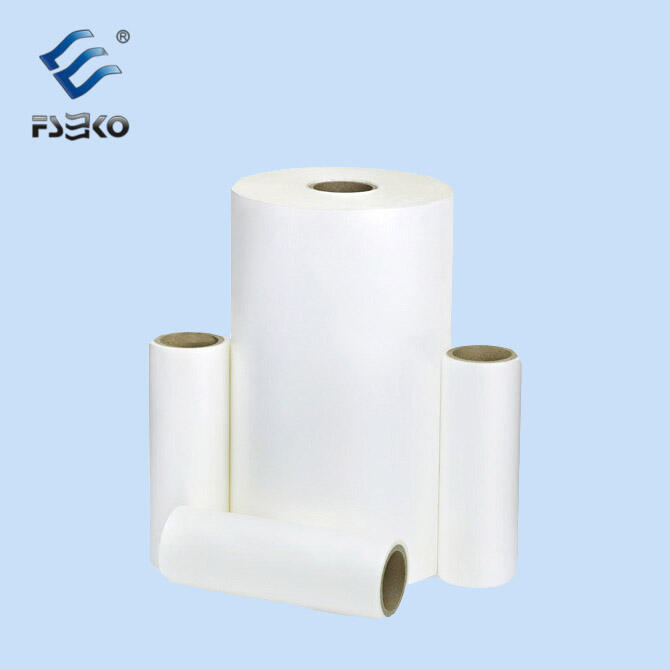Ang pagpili ng thermal lamination film ay napakahalaga para sa pagpapanatili at pagpapabuti ng mga naka-print na produkto. Kung ikaw ay isang micro entrepreneur na sumusubok na protektahan ang mga piraso ng marketing o isang organisasyon na sumusubok na pagandahin ang hitsura at pakiramdam ng packaging ng produkto, ang pagiging kaalaman sa iba't ibang uri ng thermal lamination film na available ay tiyak na magpapabuti sa kalidad at siklo ng buhay ng iyong mga naka-print na produkto. Ang artikulong ito ay nagtatanghal ng mga mahahalagang salik na dapat isaalang-alang upang matiyak na makuha mo ang pinaka-angkop na thermal lamination film para sa iyong sitwasyon.
Ano ang Thermal Lamination Films?
Ang mga film na ito ay ginagamit sa larangan ng pag-print na may layuning takpan ang isang naka-print na item tulad ng papel. Sila ay maaaring maging gloss, matte, o satin. Bawat isa sa tatlong ito ay may kanya-kanyang natatanging hitsura at kakayahang protektahan. Tandaan na ang uri ng film na gagamitin sa iyong mga naka-print na item ay ganap na nakadepende sa mga item na iyon at kung gaano ka-rough ang iyong magiging paggamit sa mga ito.
Mga Pangunahing Takeaways na Dapat Tandaan
-
Kapal ng Film : Sa palagay, isa sa mga pangunahing aspeto habang bumibili ng thermal lamination film ay ang kapal nito. Sa pinakamalawak na kahulugan, ang makakapal na pelikula ay may posibilidad na magbigay ng mas mahusay na proteksyon at tibay, ngunit hindi ito totoo sa lahat ng kaso. Halimbawa, kung ikaw ay naglalamin ng mga business card o brochure, ang mas manipis na pelikula ay maaaring gumana, gayunpaman kapag ang item ay napapailalim sa mga menu ng airline o iba pang mga materyales sa packaging, mas mahusay ang magiging resulta ng makapal na pelikula.
-
Finish Type : Ang uri ng thermal lamination film na ginagamit sa mga Elemento ay maaari ring lubos na makaapekto sa kabuuang hitsura ng mga naka-print na piraso. Ang mga promotional na materyales ay pinakamahusay na nagagawa gamit ang makintab na finish dahil pinapalaki nito ang kulay at 'nagsusuot' ng maliwanag. Ang matte finish ay nagbibigay ng eleganteng at may kulay na hitsura ngunit hindi gaanong maliwanag at maaaring pinakamahusay na gamitin para sa mga high class na item o mga propesyonal na dokumento. Isipin ang layunin ng paggamit para sa iyong mga materyales upang makatulong na magpasya sa finish na kailangan mo.
-
Kalidad ng Pandikit - Ang mga pelikula sa thermal lamination ay kadalasang pinapanatili ng isang adhesive, na tinitiyak na ang lamination ay maayos na inilalagay sa ninanais na ibabaw. Palaging piliin ang isang pelikula na napatunayan na hindi mag-peel o magbubula sa paglipas ng panahon pagkatapos itong simentohan sa substrate. Lalo na mahalaga na gamitin ang gayong mga pelikula sa mga espesyal na papel o mga tinakdang aspeto.
-
Mga Konsiderasyon sa Kapaligiran - Sa ngayon, lahat tayo ay nagiging mas mapag-iingat sa ating paligid at nagsisikap na mabawasan ang pinsala sa kapaligiran. Pag-uusapan natin ang tungkol sa mga lamina ng laminating, may mga biodegradable at recyclable na uri na magagamit ngayon sa merkado na maaaring magbigay ng seguridad habang binabawasan din ang mga makapinsala na epekto sa kapaligiran.
-
Gastos at Pagkakaroon - Sa madaling salita, bagaman mahalaga na mag-focus sa kalidad, isaalang-alang din ang presyo. Magtipon ng mga quote at hulaan kung ano ang makukuha mo sa kapalit ng pera na ginastos mo sa iba't ibang supplier. Bukod dito, siguraduhin na piliin ang pelikula na malawakang magagamit upang maiwasan ang anumang mga isyu sa pagkaantala sa panahon ng produksyon.
Kesimpulan
Upang pumili ng angkop na thermal lamination film para sa iyong mga pangangailangan, kailangan mong isaalang-alang ang ilang mga salik tulad ng kapal ng film, uri ng finish, lakas ng pandikit, pagiging eco-friendly at gastos. Ang kaalaman sa mga aspetong ito ay nagbibigay-daan sa iyo upang piliin ang thermal lamination film na nagpapabuti sa kalidad at tibay ng naka-print na tatak. Ang mga uso sa industriya ng pag-print ay lumalaki at nagbabago, at mahalagang laging sundan ang mga uso sa teknolohiya ng thermal lamination upang manatiling praktikal, at matugunan ang mga kinakailangan ng mga customer nang pinakamainam.
Mga Sulong sa Industria
Ang merkado ng thermal lamination film ay lumalaki dahil sa tumataas na pangangailangan para sa kalidad na pag-print sa maraming industriya. Ang teknolohiya ng film tulad ng mga sustainable films at pinahusay na teknolohiya ng pandikit ay nagre-rebolusyon sa hinaharap ng industriya. Ang tumataas na pokus sa pangangalaga sa kapaligiran ay malamang na hikayatin ang paggamit ng mga berdeng alternatibo sa lamination na nag-aalok ng maraming ekolohikal at kaginhawaan na pagpapabuti.


